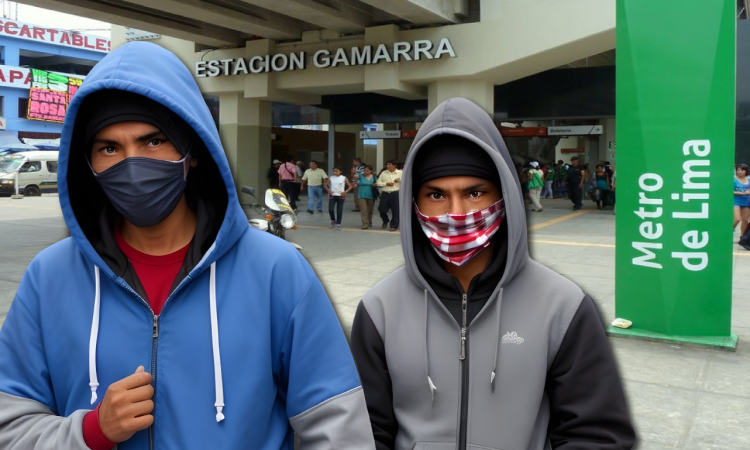Key Findings:
- Peru’s largest street market for pirated products, Gamarra, is home to around 30,000 businesses. In 2021, this district generated employment for 350,000 people, as estimated by former Production Minister José Incio. However, since lockdown policies related to the COVID-19 outbreak, Gamarra has struggled to achieve pre-COVID-19 sales.
- Criminal extortionists—known as apretones—control Gamarra’s informal businesses by dividing the streets and sidewalks into lots and charging vendors for use of each space: $8–27 per day.
- On September 3 businessmen demanded that local and federal officials implement policies to guarantee safety in Gamarra. Peruvian President Dina Boluarte announced on September 12 the deployment of 300 policemen to combat the presence of mafias.
Overview
La Victoria—one of the 43 districts in Lima, Peru—is home to the country’s largest piracy and textile market, with around 30,000 businesses. Locals have dubbed the zone the Gamarra Commercial Emporium or simply Gamarra.
Unfortunately, violence in Gamarra has risen over time, and law-enforcement officials have often been the targets. Formal businesses in the area allege that criminality has blunted sales and dissuaded potential customers, making the area particularly vulnerable to Peru’s recession. Most recently, on October 3, Susana Saldaña, president of the Gamarra Entrepreneur Association, spearheaded a public call for a government crackdown on criminality.
Criminal groups known as apretones control the zone by dividing the streets and sidewalks into lots and charging $8–27 per day to allow street vendors to work in the area. Initially, the sidewalk markets impeded pedestrians, but now even the roads are clogged, but that is the icing on the cake of worse problems.
Despite recent law-enforcement operations to remove street vendors and organized crime, both continue to operate in the area. The presence of the intertwined groups has fueled complaints about insecurity. Even extortionists get caught up in shootouts, sometimes with local business owners, over territory.
✅ A su vez un equipo de fiscalización recuperó las pistas y veredas, de las av. Bausate y Meza, Estación Gamarra de la Línea 1 del Metro de Lima y el Damero C, del comercio informal. pic.twitter.com/iVx1AVM51T
— Municipalidad de La Victoria (@munilavictoria) October 30, 2023
The vendors could be just trying to make a living in the gray or informal market, but they become pawns of extortionists and easy targets for police. Vendors are visible and the source of income for apretones, so predictably police endeavor to remove the vendors and choke off extortionist income.
Gamarra’s textile industry—assembly, importation, and manufacturing—dates back to the 1950s when Arab families living in Peru started their businesses in La Victoria. Then, new industry-related businesses such as fabric suppliers emerged in the zone. At the time, textile sellers also started to occupy streets and appropriate transit areas. In the 1960s the production of textiles expanded exponentially, with migrants coming from other cities and towns to the Peruvian capital in search of economic opportunities.
Despite the increasing complaints about insecurity and the country’s political instability, Gamarra still generates hundreds of thousands of direct and indirect jobs in Peru. In 2021, then-Production Minister José Incio estimated Gamarra generated over 350,000 jobs both in the formal and gray economies. In 2023 the country’s textile industry accounts for one million jobs in total.
How Organized Crime Gets Its Cut
Organized crime controls street vendors in Gamarra through the use of violence. Street vendors represent their main income source. If vendors do not pay the fees charged by apretones, they do not let them sell or work in the zone. An Infobae report revealed that if law-enforcement agents punish street vendors, criminals violently retaliate against officers, since a loss of vendors halts extortion income.
Robberies and pickpocketing are also common in Gamarra. Some vendors buy stolen electronic devices from criminals to repair, if necessary, and sell at prices lower than those of authorized retailers.
On July 25, hired assassins murdered Gamarra’s then chief police investigator Deberin Chihuan—who led previous operations to oust organized crime and street vendors from the zone. According to Gamarra municipal policeman Juan Roncagliolo, “Chihuan’s outstanding job and operations against apretones led to his murder.” On July 4, Chihuan led a raid against street vendors and organized crime in which around 1,600 security officers denied vendors entrance to the streets and sidewalks that criminals control. Just how much extortion income was lost is uncertain, but Infobae also reported that the murder was a reprisal for Chihuan’s actions.
Chihuan is not the only case of criminal attacks against authorities. On August 30, unidentified criminals shot Gamarra police investigator Richard Villanueva in his chest. Villanueva survived the attack, but municipal policeman Félix Burga told news network Channel N that these “assaults are criminals’ attempts to intimidate the authorities.”
Businessmen are also targets for assault and theft. On June 26, a group of at least four criminals robbed US$40,000 from two currency exchangers in Gamarra. The criminals threw tear gas in the streets before shooting the two victims who were lucky to survive.
According to a June 2023 National Statistics Institute report, between October and December 2022, La Victoria was the 12th of 43 districts in Lima with the most reported crimes. Between January and March 2023, the national police arrested 252 people in La Victoria for allegedly committing crimes. These numbers point to the broad problem of crime across Lima. Gamarra is a hub for extortion, but it is hardly alone in suffering severely from other crimes.
Businesses Reach Boiling Point
Cases of murder, extortion, and robbery have enraged citizens, especially those who own businesses and live in Gamarra. In 2023 they have made multiple requests for local officials to guarantee safety for customers and themselves. Entrepreneur Association President Susana Saldaña complained in September that there had been scant action by officials to tackle insecurity. This suggests the intimidation by apretones has largely been successful, with few policemen wanting to put themselves in the firing line.
On September 6, hundreds of local entrepreneurs went out to the streets of Lima to demand the central government implement “more police operations to tackle the increasing presence of organized crime and street vendors in Gamarra.” According to the demonstrators—who closed their businesses for 11 hours on a working day—they are tired of criminals who control the streets and street vendors right outside their businesses.
#6S Día histórico.
Los gamarrinos, en unidad, levantamos la voz.
Por seguridad,
orden,
tranquilidad y
para poder trabajar sin amenazas, ni competencia deseleal.
Ahora le toca a @presidenciaperu, @AlbertoOtarolaP. #SalvemosGamarra📷 @elcomercio_peru pic.twitter.com/bXmJDx3X8b
— Gamarra Perú (@GamarraPeru_Pe) September 6, 2023
Further, the entrepreneurs—who walked from Gamarra to the presidential palace—demanded authorities bring justice for the murder of the local chief inspector and a security plan for La Victoria. For them, it is imperative to meet the authorities and work together to get a swift, effective response against criminals.
According to people who live in Gamarra, they fear “random shootings in their neighborhood since authorities fail to take action.” Besides, multiple entrepreneurs claim that after the recent violent crimes in the area, their sales “have slowed down” because customers are afraid to go there.
The State’s Impotence
While the local government claims its law-enforcement agencies such as inspectors have carried out multiple operations in the past five months, Saldaña contended on September 3 that “there is no such thing as a strong police presence in the area.”
Saldaña told Infobae that entrepreneurs in Gamarra “have been asking the security minister for the deployment of more police officers in the area for the past months.” She added that “mafias have taken over Gamarra and it is only a matter of time before blood starts running in the streets.”
After the Gamarra entrepreneurs’ demonstration in front of the presidential palace in September, President Dina Boluarte announced the permanent presence of 300 additional police officers surveilling Gamarra daily. According to Boluarte, some police officers will work undercover to carry out intelligence against criminal groups.
EMPRESARIO DE GAMARRA: “El alcalde nos prometió Lima potencia mundial. ¿Cuál potencia mundial si no cumple lo que dice? Está hablando estupideces.”
López Aliaga, creo que te hablan. pic.twitter.com/7mWAMm7IQd
— Justicia para Urresti (@DanielUrresti1) September 6, 2023
However, this is not the first time authorities have announced a new deployment of police officers in the area. One month prior to inspector Chihuan’s murder, Security Minister Vicente Romero told the media that the state would deploy 120 police officers in Gamarra.
The announcements by the Peruvian president and other government officials remain to be tested. The fact is that previous deployments of policemen in Gamarra have failed to halt the presence of apretones who have parasitically entrenched themselves in the local economy. For better and for worse, Gamarra is a focal point for Peruvian employment and trade. Formalizing and securing the business there, especially when much of it stems from piracy, faces vicious enemies and is a tough nut to crack.
 Join us in our mission to foster positive relations between the United States and Latin America through independent journalism.
Join us in our mission to foster positive relations between the United States and Latin America through independent journalism.
As we improve our quality and deepen our coverage, we wish to make the Impunity Observer financially sustainable and reader-oriented. In return, we ask that you show your support in the form of subscriptions.
Non-subscribers can read up to six articles per month. Subscribe here.



